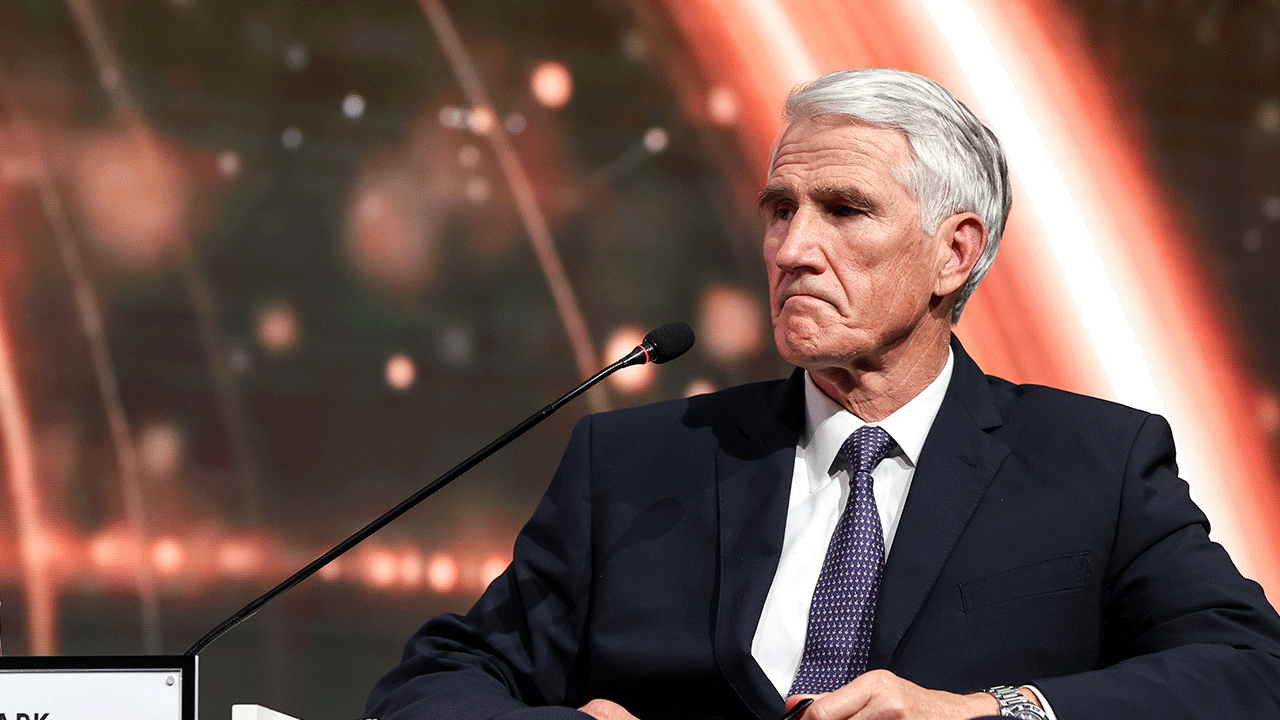The Three Unknowns After the U.S. Strike on Iran

© Photo illustration by Caitlin Teal Price for The New York Times

© Photo illustration by Caitlin Teal Price for The New York Times

© Illustration by Sam Whitney/The New York Times






Does your brother-in-law remind you of someone else in your past? Or is the problem your changed relationship with your sister? Working that out could reduce your annoyance
• Every week Annalisa Barbieri addresses a problem sent in by a reader
I love my sister. But I can’t stand her husband. He is an idiot who thinks he is better than other people and talks down to them. I am a man in my 50s and I used to visit my sister a lot, but now I would rather do something else. I try to hide it, but it must be clear I am not keen on him. They have been married for eight years and things are getting worse; he used to work and contribute, but now he doesn’t even do that. What can I do? I want to support my sister while spending as little time as possible with her husband.
This happens in lots of families, unfortunately. Unless one’s parents split and remarry, it’s usually only when siblings partner up that a new person (a stranger!) is brought into the family and the dynamics change. We all wish these new additions bring joy and harmony, but sadly often they do not. And then we’re not only saddled with a person we don’t like, who is now part of the family, but we’re left looking at the person who brought them in and thinking, “Really?” This can lead to all manner of unravelling of childhood feelings when it’s a sibling.
Continue reading...
© Illustration: Alex Mellon/The Guardian

© Illustration: Alex Mellon/The Guardian
As grim tally of its invasion is reached, expansive propaganda campaign and state payouts are keeping grieving relatives onside
Over the past few years, Nikolai has seen the ups and downs of the funeral trade in his native Ufa, a Russian city in the plains west of the Ural mountains.
The coronavirus pandemic, which hit Russia with devastating force, brought an unexpected boom to his family-run business, forcing him to hire extra staff almost overnight to cope with the rise in funeral demand.
Continue reading...
© Photograph: Alexander Ermochenko/Reuters

© Photograph: Alexander Ermochenko/Reuters




















































As Trump considered striking Iran, some advisers adjusted public arguments to suggest quick bombing run
Donald Trump’s move to bomb three nuclear sites in Iran came as those inside his orbit who were opposed to US intervention in the conflict shifted their views in favor of a limited and one-off strike.
The US president had been under immense pressure from Republican anti-interventionists not to engage in any action against Iran out of concern that the US might be dragged into a protracted engagement to topple Iran’s leadership, or that strikes on facilities might have limited success.
Continue reading...
© Photograph: Carlos Barría/Reuters

© Photograph: Carlos Barría/Reuters


‘Sometimes these bodies even have Russian passports’, says Zelenskyy, condemning Moscow’s disorganisation in swapping of PoWs and troops’ remains. What we know on day 1,215
Volodymyr Zelenskyy said that Russia sent Ukraine at least 20 of its own dead soldiers in recent exchanges with Kyiv, describing it as a result of Moscow’s disorganisation in carrying out large swaps of wounded PoW’s and remains of troops. Zelenskyy said that an “Israeli mercenary” fighting for Moscow was among the dead Ukraine had received. Officials did not disclose the identities of the bodies: “They threw the corpses of their citizens at us. This is their attitude toward war, toward their soldiers. And this is already documented. Sometimes these bodies even have Russian passports,” he said. He said the Russian side insisted the dead were all Ukrainians.
Zelenskyy has also accused western firms of supplying Russia with “machine tools” used to make weapons, in remarks made public Saturday. He said companies from Germany, the Czech Republic, South Korea and Japan were among them, as well as one business “supplying a small number of components from the United States.” He said most of the companies supplying tools to Russia were from China, but that dozens of western firms were also culpable: “We have passed on all this information to all countries, our partners, everyone … We strongly urge everyone to impose sanctions on these companies,” the Ukrainian leader added.
The Ukrainian president also called on Ukraine’s western partners to allocate 0.25% of their GDP to helping Kyiv ramp up weapons production and said the country plans to sign agreements this summer to start exporting weapon production technologies. In remarks released for publication Saturday, Zelenskyy said Ukraine was in talks with Denmark, Norway, Germany, Canada, the United Kingdom, and Lithuania to launch joint weapon production. He also said on Saturday he was planning staff changes in Ukraine’s diplomatic corps and also in government institutions to boost the country’s resilience. He gave no time frame for the decisions.
Siarhei Tsikhanouski, a leading Belarus opposition figure, was freed on Saturday after more than five years in prison, in the most significant move so far by Belarusian president Alexander Lukashenko to try to ease his isolation from the West. Lukashenko has been shunned by the West for years and faced sanctions after brutally crushing pro-democracy demonstrations in 2020 and then allowing Vladimir Putin, his close ally, to launch part of his 2022 invasion of Ukraine from Belarusian territory. The release came just hours after Belarusian authorities announced that Lukashenko met with US president Donald Trump’s envoy for Ukraine, Keith Kellogg, in Minsk.
In the Donetsk region, Russian strikes on Saturday on key towns on the eastern front of the war in Ukraine killed at least one person. The Russian military said its forces had captured another small village in its slow advance westward through Donetsk region. Russian forces struck Sloviansk and Kramatorsk – two cities that Moscow will target as its forces press on. Donetsk region Governor Vadym Filashkin said one person died and three were injured in Sloviansk. In Kramatorsk, officials said at least one person was trapped under rubble and a number of other residents were injured.
In the north, another person died in a drone attack in the north near the Russian border, Ukrainian officials said. A mass drone attack on the town of Nizhyn near the Russian border killed one person and damaged local infrastructure. Reports from Kharkiv region in the north-east suggested Russian troops were closing in on the city of Kupiansk. On Friday, the Russian Defence Ministry said it had captured the village of Moskovka, just outside the city of Kupiansk.
Deportation of Ukrainians is part of a continuing “cleansing” operation of the occupied territories, reports the Guardian’s Shaun Walker in Zaporizhzhia, which may accelerate if US-led attempts to push Russia and Ukraine into a peace deal result in the freezing of the current frontlines, solidifying Russian control over the territory Moscow has seized over the past three years.
Continue reading...
© Photograph: Russian Defence Ministry Press Service/EPA

© Photograph: Russian Defence Ministry Press Service/EPA













Donald Trump said the strikes were a ‘military success’, but why was the US involved in attacking the nuclear enrichment facility?
President Donald Trump on Saturday said that a US attack on Iran’s three principal nuclear sites: Natanz, Isfahan and Fordow had led to the “obliteration” of its key enrichment facilities. Later Iranian media acknowledged part of the Fordow site had been “attacked by enemy strikes”.
“Everybody heard those names for years as they built this horrible destructive enterprise. Our objective was the destruction of Iran’s nuclear enrichment facility,” said Trump on Saturday night. “The strikes were a spectacular military success.”
Continue reading...
© Photograph: 2025 PLANET LABS PBC/AFP/Getty Images

© Photograph: 2025 PLANET LABS PBC/AFP/Getty Images
The administration has torn up the rulebook as it seeks to implement a hardline agenda to expel people from the US
Donald Trump retook the White House vowing to stage “the largest deportation operation in American history”. As previewed, the administration set about further militarizing the US-Mexico border and targeting people requesting asylum and refugees while conducting raids and deportations in undocumented communities, detaining and deporting immigrants and spreading fear.
Critics are outraged, if not surprised. But few expected the new legal chapter that unfolded next: a multipronged crackdown on certain people seen as opponents of the US president’s ideological agenda. This extraordinary assault has come in the context of wider attacks on higher education, the courts and the constitution.
Continue reading...
© Composite: Guardian Design

© Composite: Guardian Design
The Parrot family will be guiding Foxy Lady, Polished Copper, Bronte, Barry and Jeffrey and co in the hoof-steps of history
Get our breaking news email, free app or daily news podcast
Instead of a dozen red roses, a bottle of bubbly or romantic poetry, Emily Parrott gave her husband a camel to celebrate their first Valentine’s Day.
“When he met me, that’s when he met camels,” she says of husband, Luke. “He found his first two loves.
Sign up for Guardian Australia’s breaking news email
Continue reading...
© Photograph: AAP

© Photograph: AAP

© Sergey Ponomarev for The New York Times

© Omar Marques/Getty Images

© Eric Lee for The New York Times
President Donald Trump announced Saturday that the U.S. struck three major Iranian nuclear sites: Fordow, Natanz, and Isfahan.

© Planet Labs PBC
President need only look to his predecessors to see what will happen now that he has committed to military strikes in the Middle East, writes Eric Garcia

© REUTERS